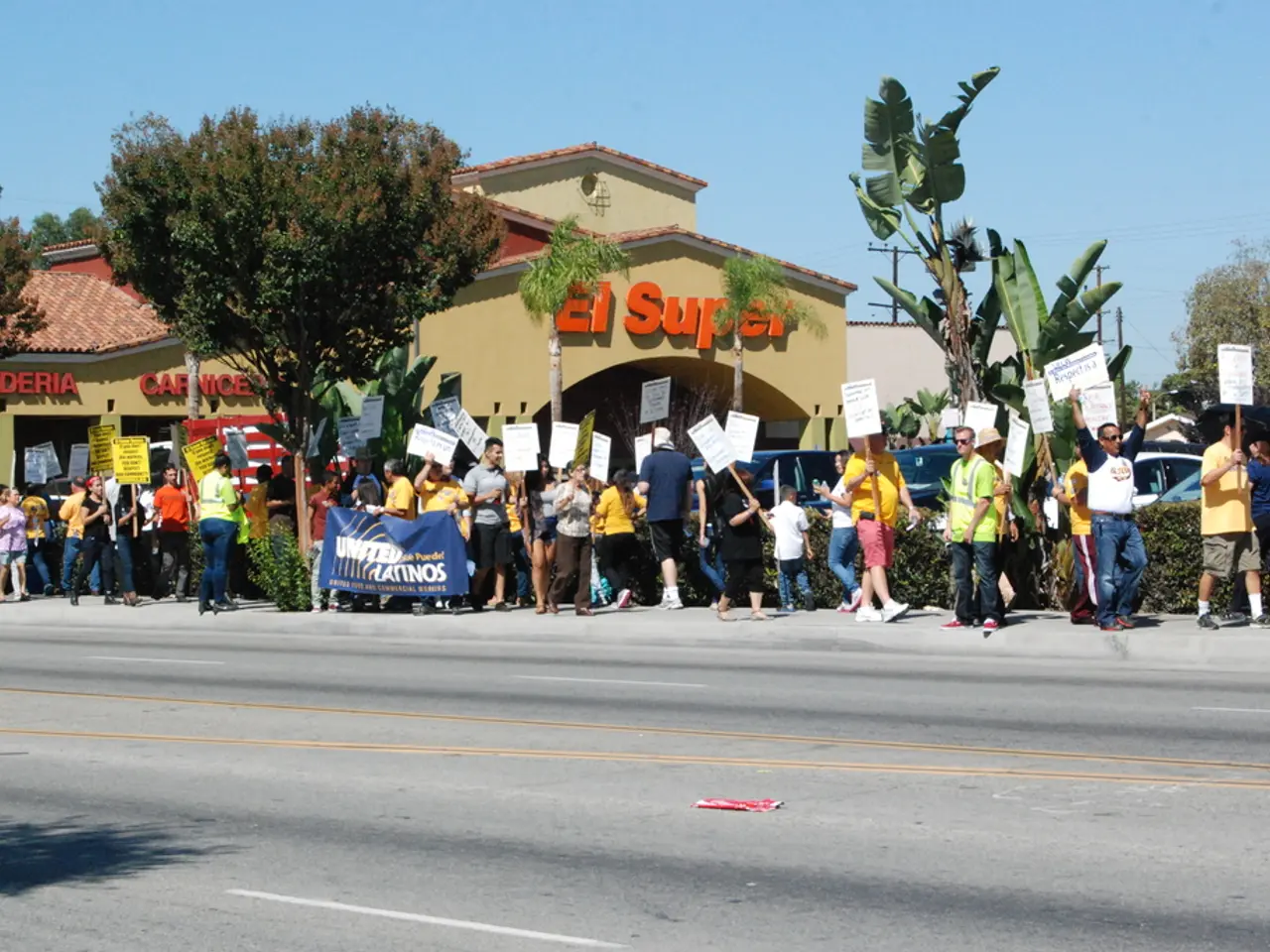Insights from recent studies on the factors contributing to Trump's victory in the 2024 election
In a new analysis by the Pew Research Center, the 2024 election's electorate reveals a racially and ethnically diverse voter coalition that propelled President Donald Trump back into the White House. Released on Thursday, the report delves into the dynamics of the 2024 electorate, demonstrating a clearer picture of the recent U.S. elections.
According to the Pew report, about 75% of eligible voters in the U.S. stuck with their 2020 voting decisions, whether Democrat or Republican, third-party, or abstaining. However, the remaining 25% switching their allegiance provided the edge needed for Trump's victory.
Trump managed to retain an impressive 85% of his 2020 voters, while Vice President Kamala Harris kept around 79% of former President Joe Biden's supporters. The analysis shows that Trump successfully raised his share of the vote among Hispanic voters (48%, up from 36%), Asian voters (40%, up from 30%), and Black voters (15%, up from 8%).
The race for votes among various groups was largely due to differences in voter turnout between 2020 and 2024. The authors of the Pew report asserted that, while a small percentage of voters switched parties, the shift in supporting candidates was essential in determining the outcome.
Compared to 2020, 15% of Biden supporters and 11% of Trump supporters failed to cast their vote four years later. Trump also gained approximately 5% of Biden's 2020 supporters, while Harris attracted roughly 3% of the voters who backed Trump in the previous election. Interestingly, those who decided to vote in 2024 plumped for Trump over Harris, 54% to 42%.
The Pew Research Center's analysis is based on a survey conducted immediately after the presidential election, providing an estimate of voter behavior rather than absolute precision. Different post-election analyses may diverge slightly, even when they converge around a general consensus.
The report not only incorporates fresh data sources but also tracks specific individuals' voting patterns by combining survey data with information from official voter records. According to the report, similar findings regarding the decisive role of irregular voters in Trump's victory were also presented in last month's report from the Democratic-aligned data firm Catalist.
Among other insights, the Pew report reveals that Trump improved his numbers among male voters and widened the education gap in American politics. While college graduates backed Harris by a significant margin, those without degrees supported Trump by a substantial lead. Naturalized citizens of the U.S. made up about 9% of the 2024 electorate, with Harris and Trump enjoying near-equal support.
Intriguingly, nonvoters, who typically lean Democratic, evenly split their preferences in 2024, favoring Trump over Harris, 44% to 40%. Scott Keeter, a senior survey advisor at Pew, remarked that if everybody who was eligible to vote in 2024 had participated, the margin would have benefited Trump slightly, rather than helping Democrats and Harris.
The Pew Research Center surveyed 8,942 U.S. adults in November 2024, using the American Trends Panel. The survey's results among validated voters have a margin of error of +/- 1.5 percentage points, with more details available on the survey methodology.
- The 2024 electorate, propelled by migration and diversity, elected President Donald Trump, according to a Pew Research Center analysis.
- Polish and Korean voters, for instance, showed a significant increase in supporting Trump, signifying a shift in the dynamics of politics.
- Education-and-self-development and personal-growth initiatives should consider the impact of political shifts on student demographics and voting patterns.
- The report also highlighted the importance of mindfulness and productivity for voters, emphasizing the need for efficient policy-and-legislation that cater to these aspects.
- War-and-conflicts and crime-and-justice loomed large in the election, with candidates proposing different strategies to address these issues.
- Car-accidents, fires, and other accidents affected various districts, touching upon issues of safety and infrastructure that voters considered during the election.
- Learning, goal-setting, and lifelong-learning were key elements in voter decision-making, as individuals sought candidates who could help them achieve their aspirations.
- Skills-training programs were another critical factor for voters, with many seeking candidates who would invest in vocational and technical education.
- Sports, such as football, basketball, baseball, hockey, golf, and various European leagues, had a significant role in the election, with champions-league and NBA games influencing public opinion.
- Sports-betting became a point of contention in policy-and-legislation debates, with some candidates advocating for more relaxed regulations.
- Online-education platforms and job-search websites experienced increased traffic during the election, reflecting the importance of career-development for voters.
- General-news outlets provided comprehensive coverage of the election, while specific news sites focused on topics like sports, crime, and politics.
- The impact of migration on the economy and labor market was a hot topic during the election, with candidates proposing different measures to address these concerns.
- The role of curriculum and funding in education even influenced voters who traditionally paid less attention to politics.
- In an era of evolving social norms, voters considered issues like reproductive rights, LGBTQ+ rights, and climate change when casting their ballots.
- The intersection of politics and sports was evident in the NFL, WNBA, MLB, NHL, racing, premier-league, American football, tennis, and other sports.
- Strong performance in sports, particularly in championships like the Masters, Grand-Prix, horse-racing, Serie-A, LaLiga, and NCAAs, bolstered the popularity of teams, coaches, and players.
- The NBA Finals, for instance, had a significant impact on voters' sentiment, with fans of the winning team often expressing their support on social media.
- Social media, in turn, played a crucial role in disseminating information about the election, accentuating the significance of online presence for candidates.
- Mixed-martial-arts fighters and auto-racing drivers also made waves in politics, appealing to voters due to their physical prowess and tenacity.
- Europe and other continents watched the election closely, with various European leaders expressing their predictions and preferences.
- Depending on the outcome of the election, international policies on migration, trade, and defense would change accordingly.
- The election also had implications for the business sector, with potential shifts in costs, regulations, and opportunities for corporations.
- Intra-party politics, especially the Democratic primary, was equally captivating, with voters closely following the rivals' debates and campaign strategies.
- Ultimately, the election was not just about politics, but about the future of the nation, its people, its economy, and its role in the world, touching upon various aspects of life, from sports to education.








